Remember the Top Gear when Clarkson drove to work? Sounds like the dullest episode ever, right? This particular cross-London commute was different, though. This time, Jeremy was behind the wheel of a Peel P50.
The P50 is 54 inches (1,370mm) long and 41 inches (1,040mm) wide, and holds the Guinness World Record for being the smallest road-legal car. It’s tiny enough to drive along the corridors of BBC Television Centre and share an elevator with Fiona Bruce. Not even a Smart can do that.
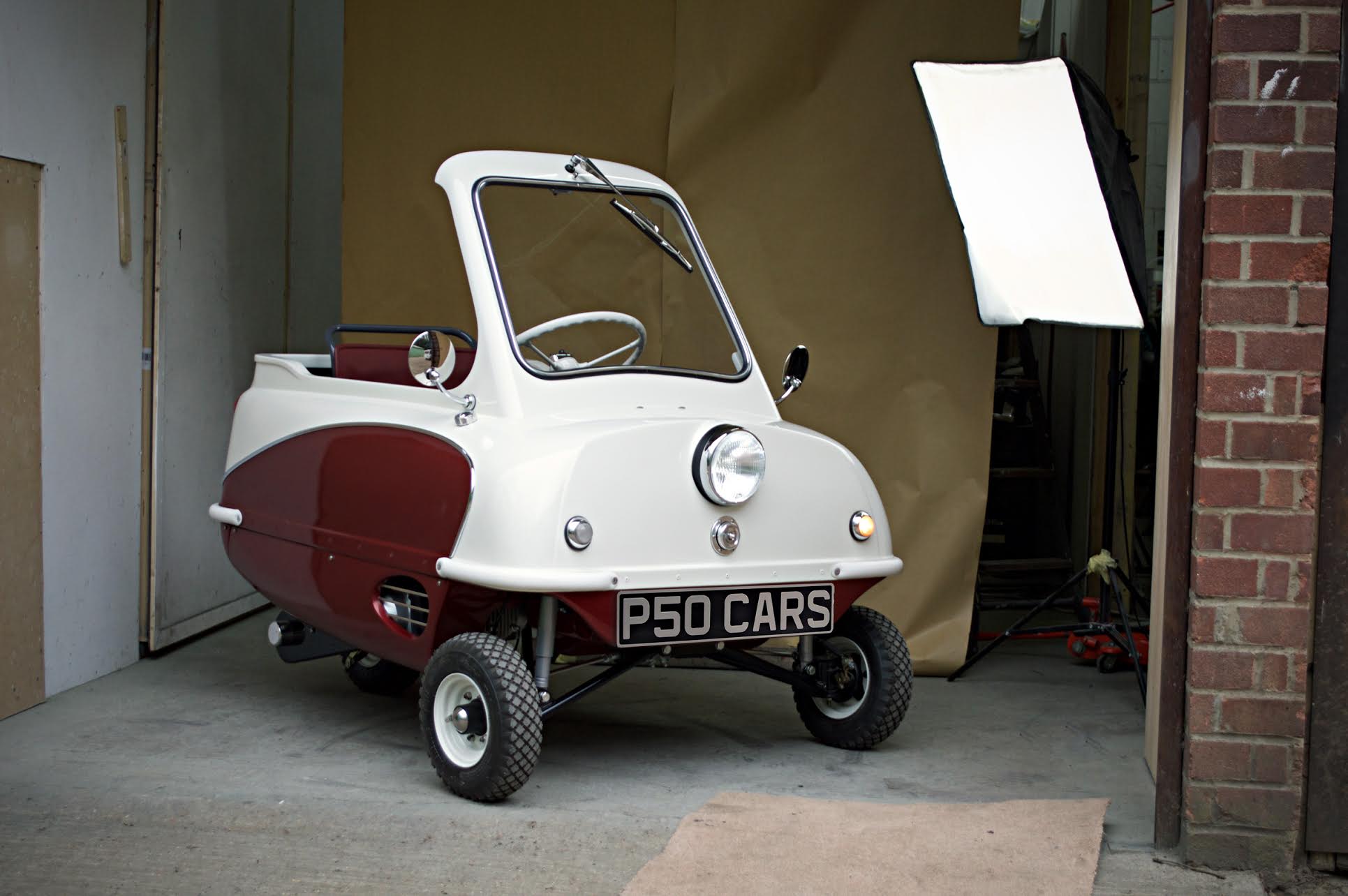
The Top Gear review reignited interest in P50, and also sparked something in Jim Buggle: founder of P50 Cars. At the age of 13, Jim had watched a documentary about Peel – narrated, oddly enough, by DJ John Peel. It was his first step in a lifelong obsession with this quirky microcar from the Isle of Man.
Years passed and Jim swapped his toys for tools, got an engineering degree and decided to remanufacture the car Clarkson called “the ultimate in personal mobility”. And that’s how I end up on a nondescript industrial estate in south London, grinning from ear to ear as I blast to 25mph and (slightly) beyond.
Fairweather friend
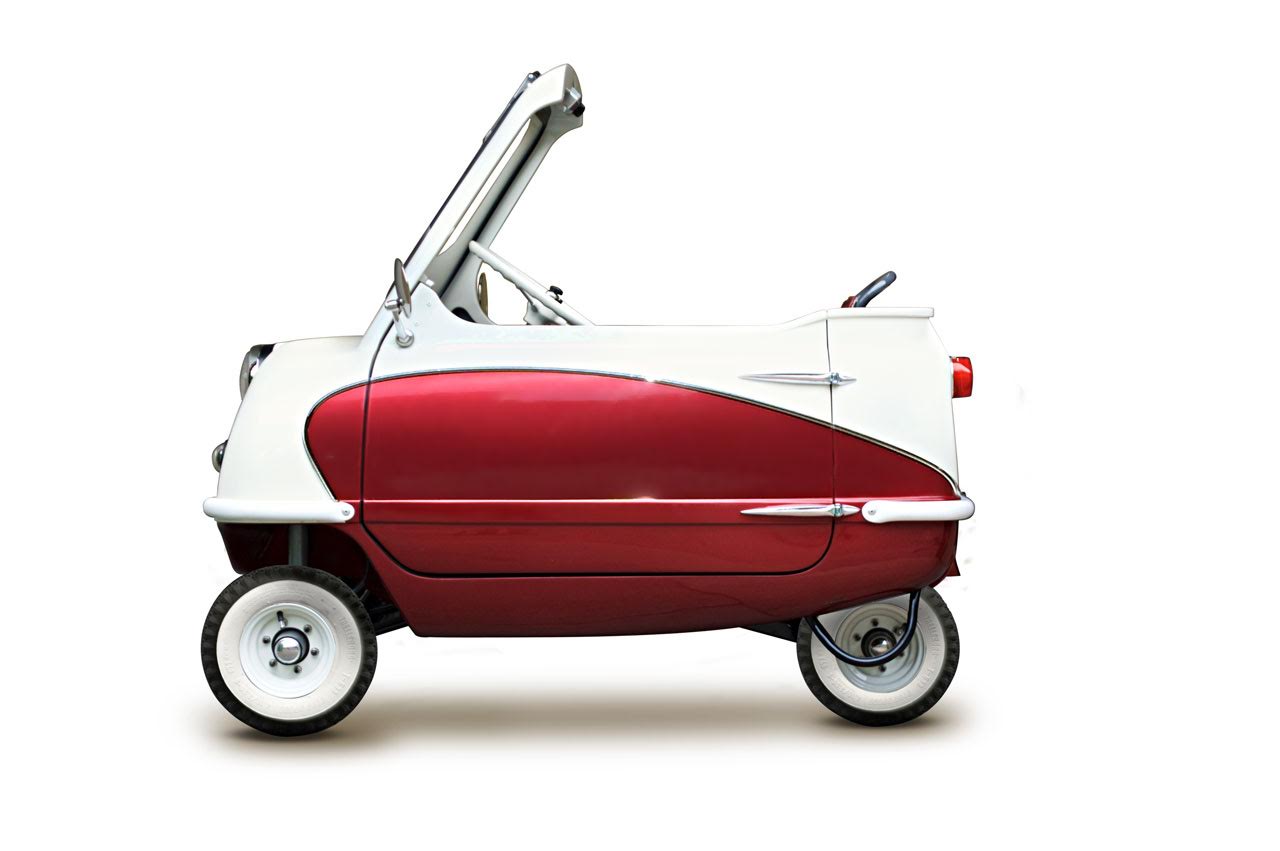
The car I’m here to drive isn’t just any P50, but the world’s first convertible version – christened the ‘Fairweather’ by Jim’s business partner Craig Wilson.
Craig is P50 Cars’ one-man production line, and a bona fide engineering genius. He’s lovingly assembled the Fairweather from scratch in a room scarcely larger than my kitchen. You’ll search in vain for robots or laser welding rigs here; fibreglass bodies are moulded and painted on-site, with many parts – such as the steering wheel and rear lights – made by hand.
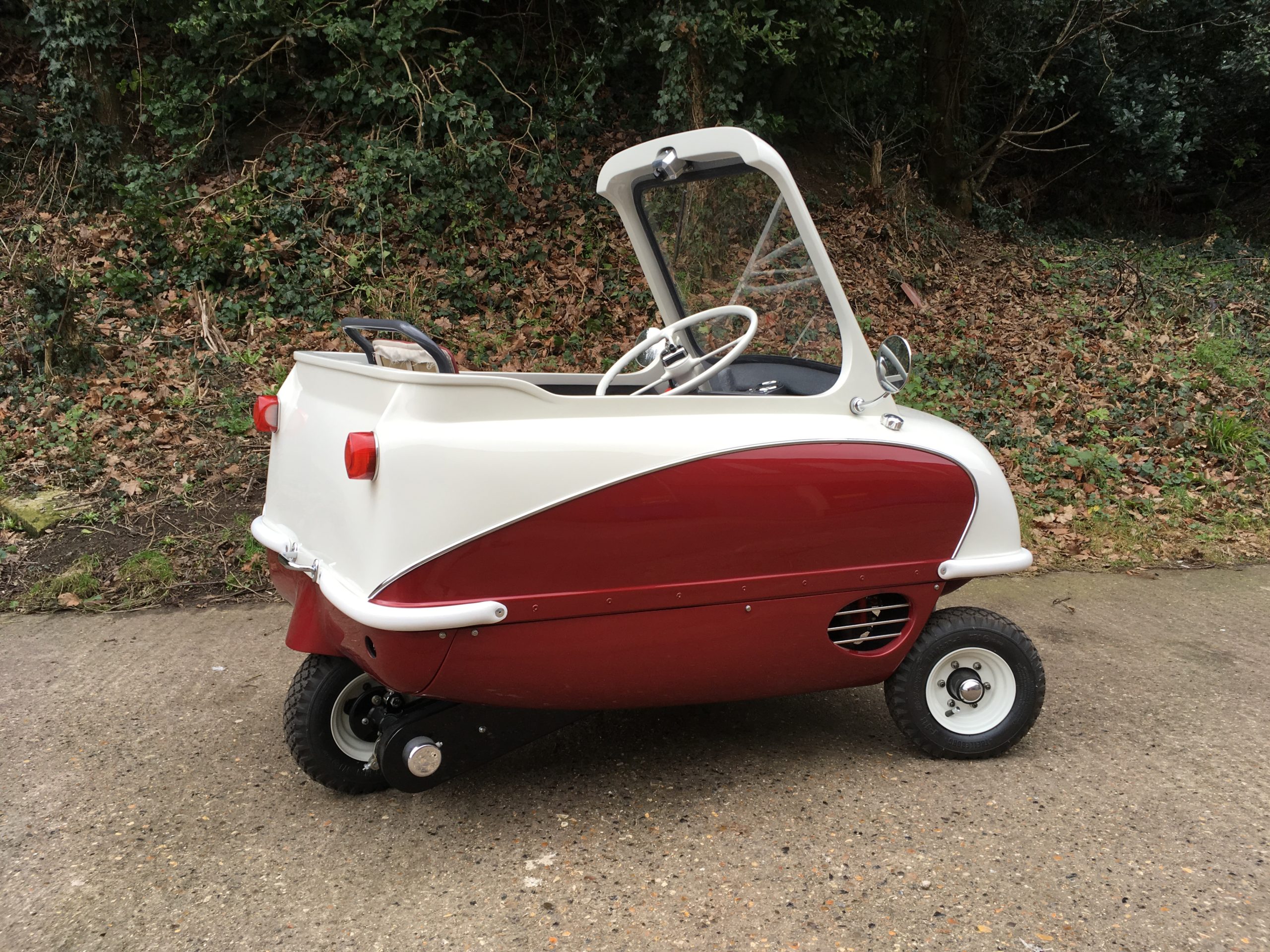
The number of late nights and bruised knuckles that went into the Fairweather explains why a Qatari king paid serious money for it.
The company now plans a run of open-top P50 Spyders, starting from £15,995 plus VAT. A ‘regular’ P50, however, starts at £7,495 plus VAT as a build-it-yourself kit, or £12,495 plus VAT fully assembled. Not quite “cheaper than walking”, then (to quote Clarkson again) – but no matter.
Petrol or electric
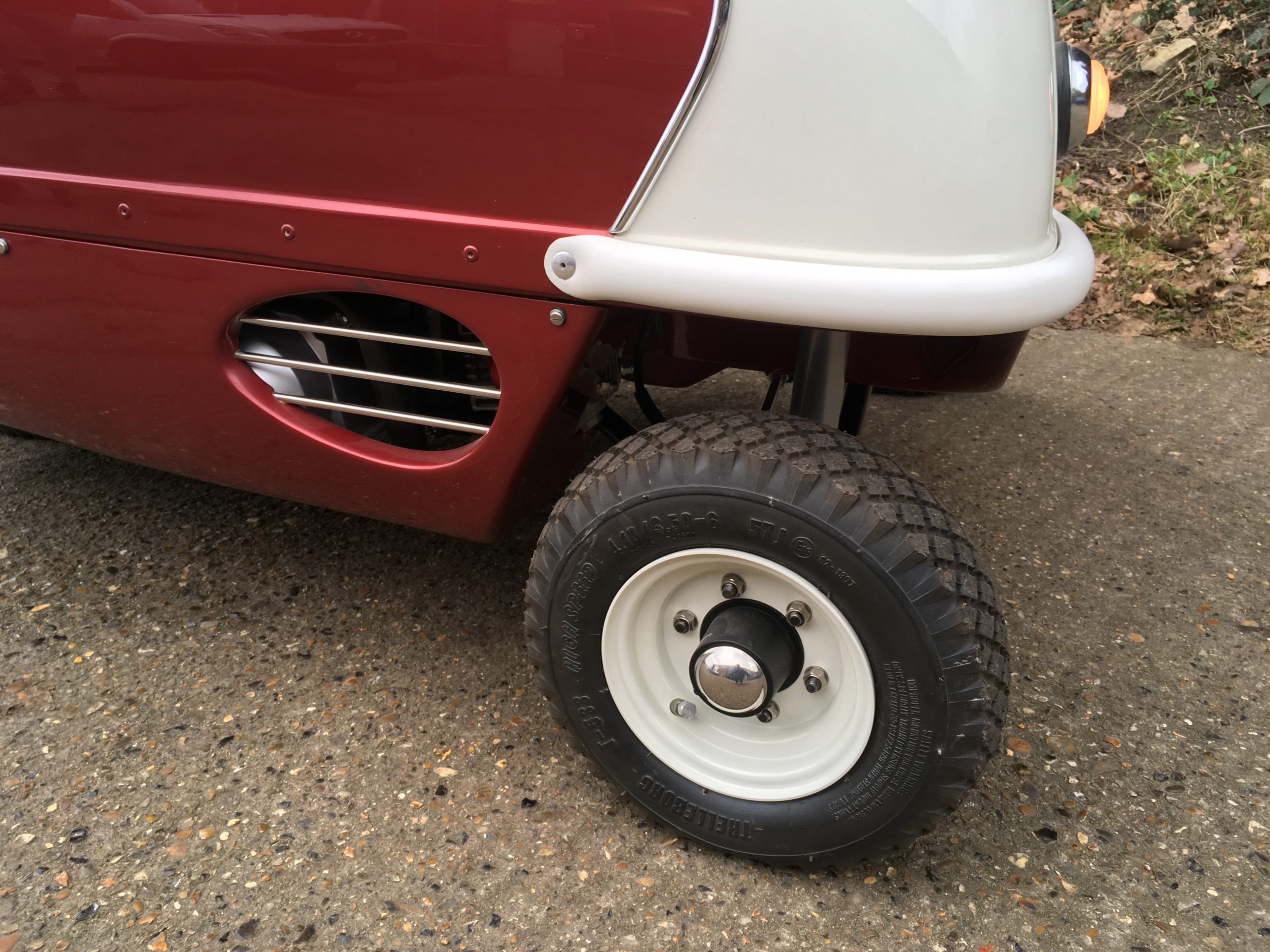
The original car used a DKW moped engine, but the modern version (which, incidentally, isn’t badged a Peel – P50 Cars doesn’t own the trademark) uses a replica Honda Cub unit. Estimated fuel economy is a thrifty 145mpg. Take that, Prius.
You can also opt for a 3.1kW electric motor with batteries that charge to 80 percent capacity in an hour, or fully charge in two. “It’ll run directly off the mains if you find a long enough lead,” says Jim, only half in jest.
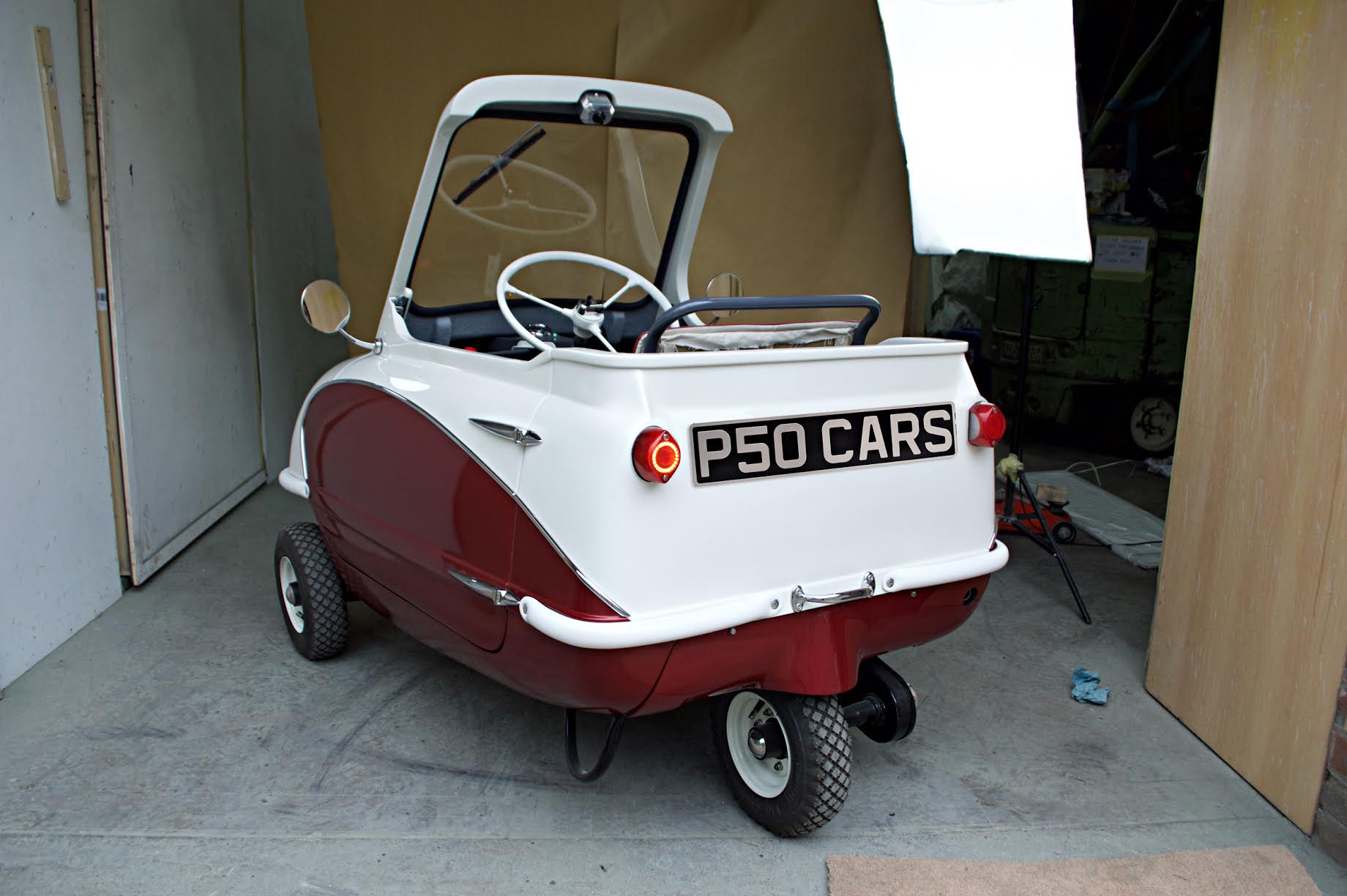
This P50 doesn’t have a reverse gear, yet backing it out of the workshop is laughably easy. Jim grabs the handle on the bumper, hoiks the rear tyre off the ground and wheels it out: shopping trolley-style.
I try for myself, marvelling how this tiny car can be lifted with one arm then spun on its axis. It feels like you could take it anywhere. Except, perhaps, up or down steps…
Comfier than Clarkson
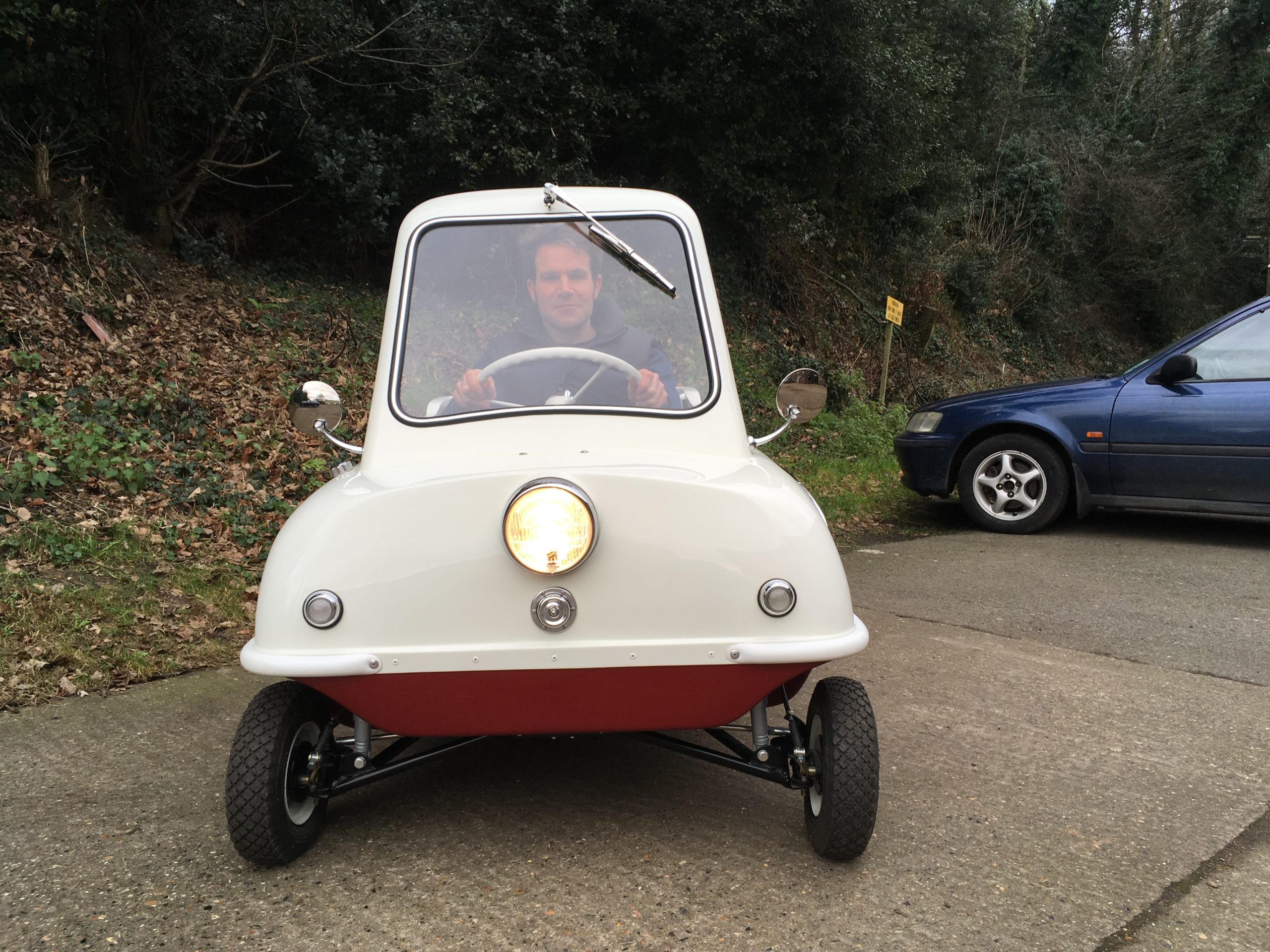
Clarkson needed two attempts to shoehorn his 6ft 5in frame inside a P50. At a vertically-challenged 5ft 7in, though, my task is considerably more straightforward. The absence of a roof helps, too; simply pop the catch on the rear-hinged door and step inside.
You wouldn’t call it accommodating, however. I’m perched on a glorified garden chair, enclosed by bare fibreglass (“carpets are optional”, says Jim). There’s a speedo – sourced from an East German Simson motorcycle – plus a clever miniature audio system (essentially an amplifier and two speakers for your smartphone). But that’s your lot.
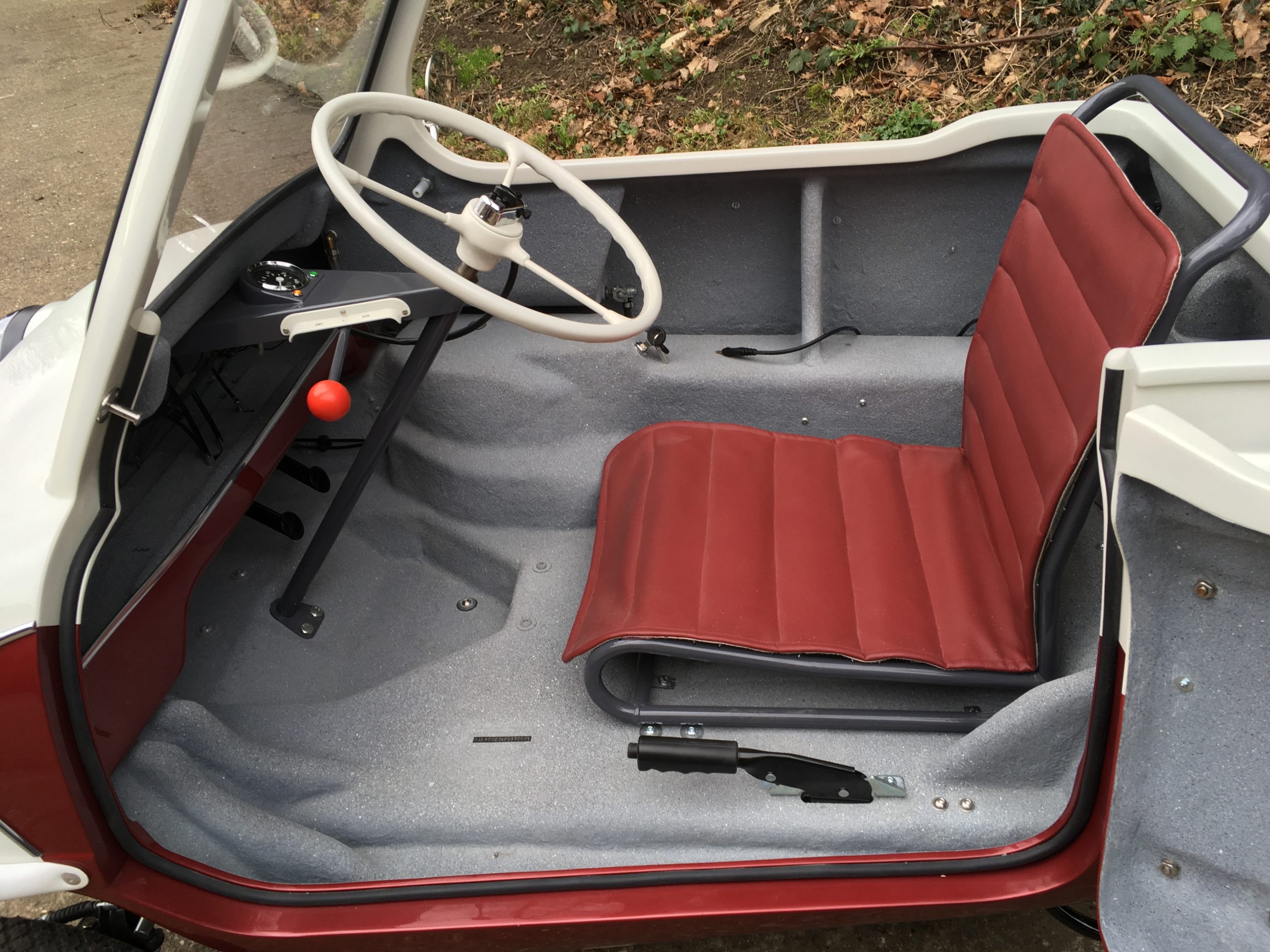
Such concerns are soon forgotten when I fire up the engine. The original Peel had to be cranked into life with a starting handle, but this retro remake has an electric start. Click-whirr-thud-thud-thud-thud-thud. It sounds, unsurprisingly, just like a moped, its single-cylinder motor vibrating through the thinly-padded seat.
I click the column shift into gear and I’m off, a bemused postman watching my every move as I edge gingerly onto the road.
Peel’s on wheels
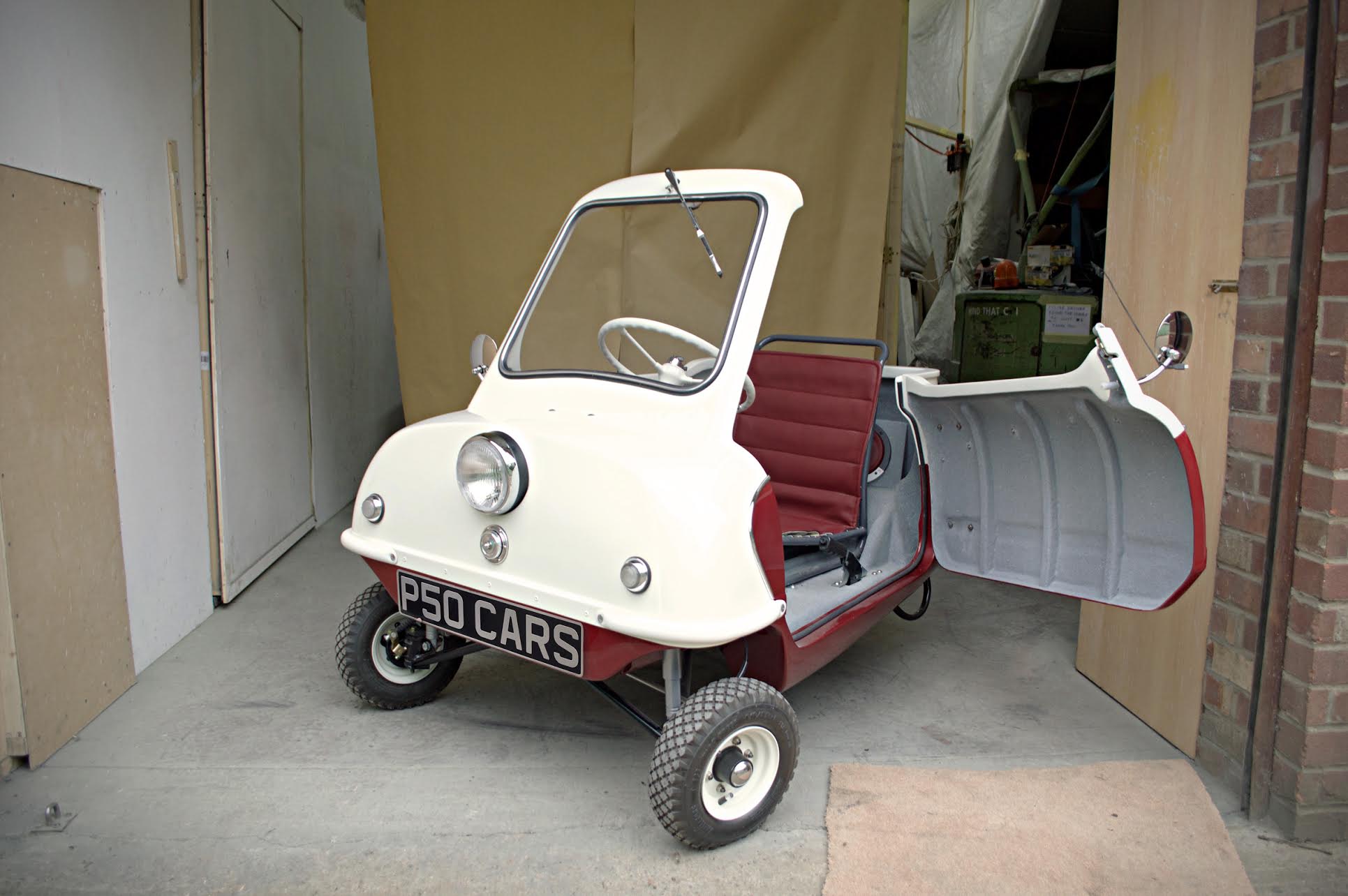
At this juncture, I should point out that the Fairweather isn’t road-registered. So although it has lights, indicators and a horn, it doesn’t yet wear number plates. As such, I’m restricted to private roads on the industrial estate where P50 Cars is based. But that’s more than enough space to get this unique car up to speed.
Speed? Jim reckons the P50 will top 40mph flat-out, but a restrictor limits it to 30mph. On the plus side, that means it can be driven on a provisional licence. And road tax (VED) is the same as a moped: just £20 a year.
Frankly, 30mph feels swift enough when you’re inches from the tarmac in something akin to a two-tone bath tub. The reborn P50 boasts 4.5hp – twice the output of the 1962 car – so it gathers pace steadily, bouncing over bumps as the 50cc motor blares boisterously from below.
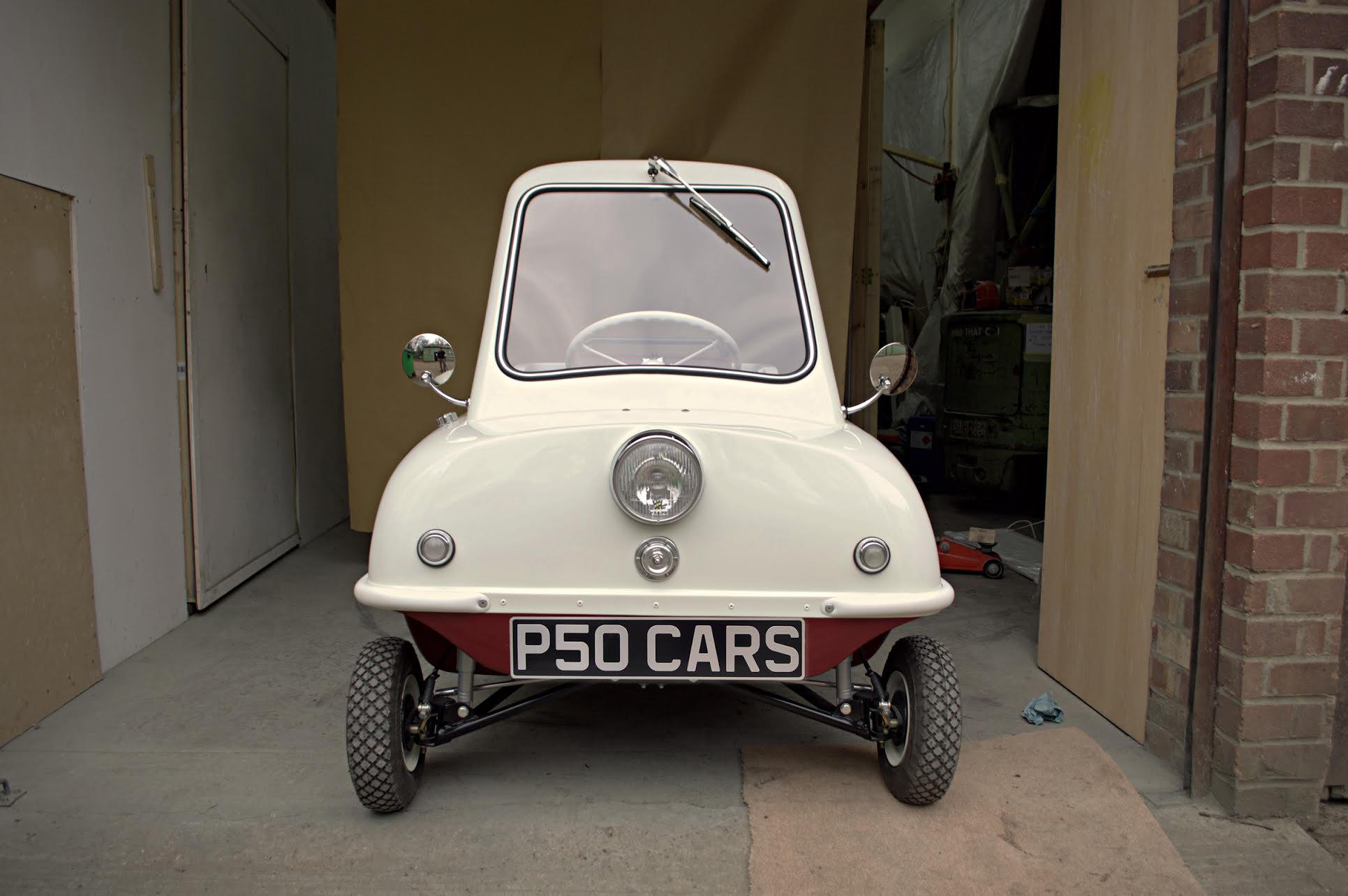
The familiar soundtrack jogs memories of the Pizza Hut moped I rode in my student days. Pizza deliveries by P50? Now there’s a thought.
It may not be quick, but the P50 changes direction like a toddler on tartrazine. Thank tiny six-inch wheels, sharp steering and a wheelbase shorter than my inside leg. There are no gears to worry about, so driving it couldn’t be easier: you simply steer and go.
Stopping is more of an issue, however. I’m somewhere north of 15mph when a monster truck (OK, a Nissan Qashqai) looms ominously into view. I dab the left pedal and… nothing. Only when I squeeze harder does the P50 gently scrub off speed. Jim looks on nervously as I putter past, my eyes barely level with the crossover’s door mirrors.
Sense of scale
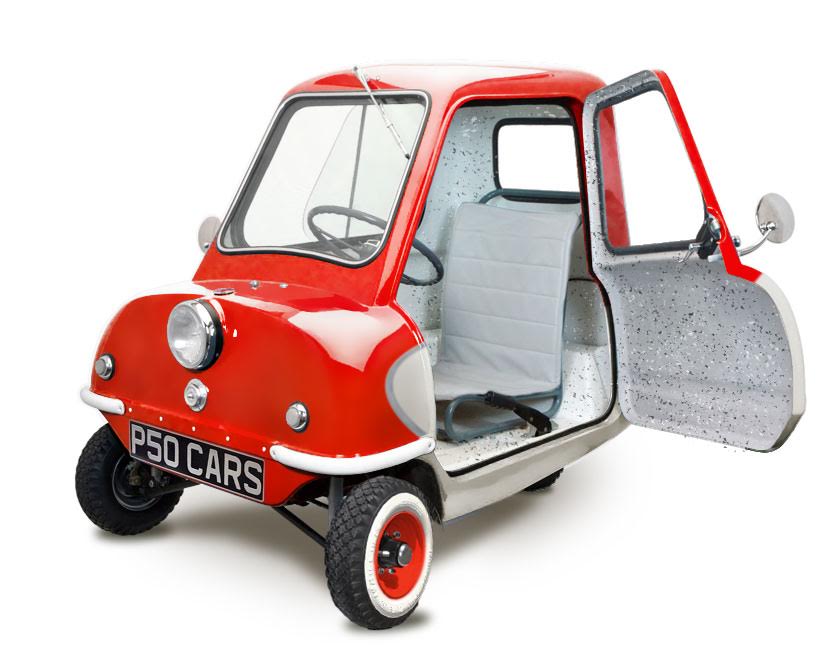
On reflection, perhaps it’s a good thing I won’t be unleashed on the streets of Bexley today. Dicing with London buses and homicidal Uber drivers in this beautifully-finished, one-off P50 isn’t a prospect I’d relish.
Sensible consumer advice, then: unless you live on the Isle of Man, the P50 isn’t ideal commuter transport. It won’t have trendy urbanites trading in their Twizys. But as a budget fun car, it takes some beating.
And it’s so much fun. You know how 1980s hot hatches would cock an inside rear wheel when cornering hard? The P50 does the opposite. Take liberties with the steering and it can lift an outside front wheel, ‘waving’ at oncoming traffic like a one-eyed alien.
It’s genuinely, laugh-out-loud hilarious – certainly more so than a moped with a stack of Stuffed Crusts on the back. Even jaded, post-lunchbreak mechanics and warehouse workers can’t help but smile.
Trident for two
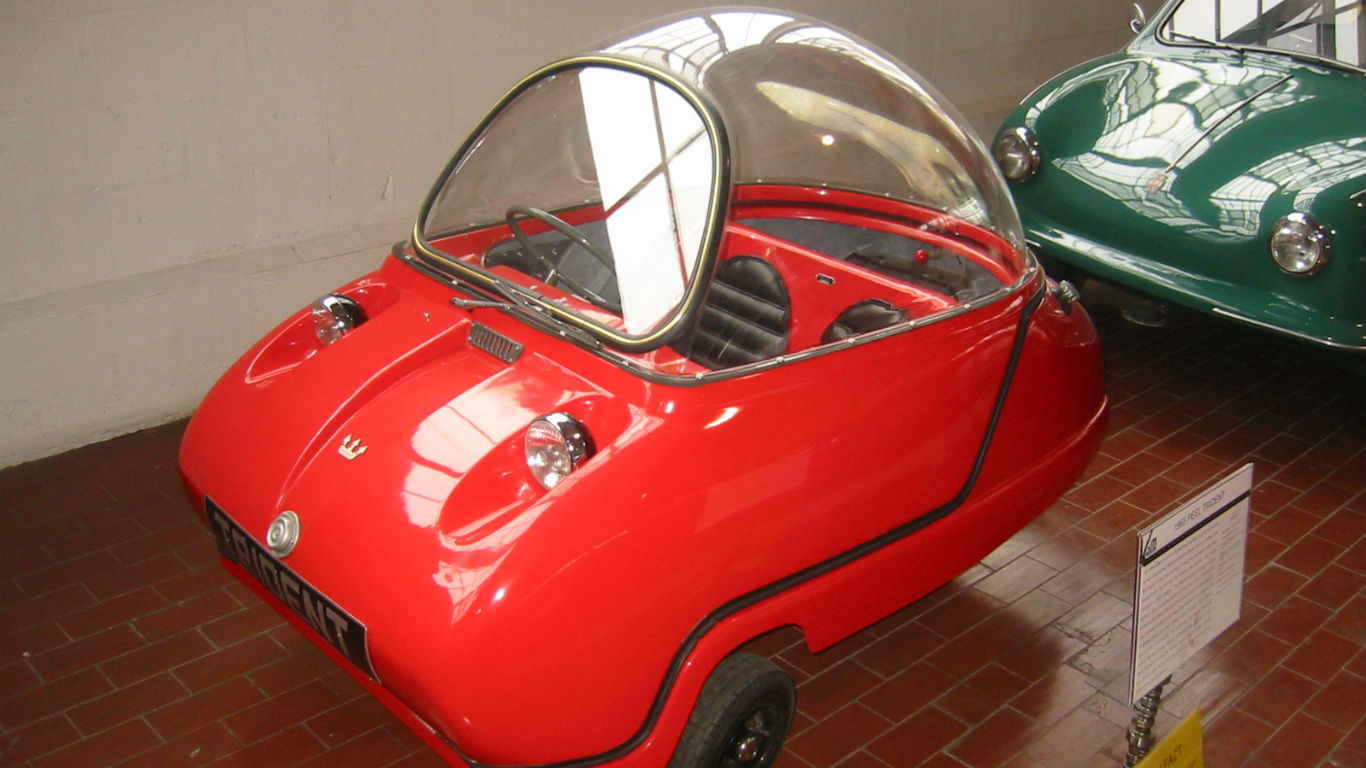
Clambering out, I spot a faded fibreglass buck in the corner of the workshop: “That’s the two-seat Trident,” explains Jim, “our latest project.”
The bubble-domed Peel Trident resembles the flying car from The Jetsons cartoon. Built between 1964 and 1965, it actually outsold the P50. According to the John Peel documentary, the Trident was “popular with courting couples” – perhaps because its tiny cabin meant driver and passenger would, inevitably, become intimately acquainted.
I’m excited to see a production Trident – and genuinely wish P50 Cars all the best. It’s great to see an innovative British company thriving in this niche market. However, for me, the P50 will always be the star.
Where the Trident bears similarities to other microcars of the era (Messerschmitts, Heinkels, BMW Isettas, and so on), the P50 is like nothing else. And, 58 years later, it’s still the world’s smallest car.



💕 the P-50 ! I would very much like to own one. Are they still being made ?
I love 💕 the look 👀 of the topless P-50. I want to see and try a true convertible version of this car.